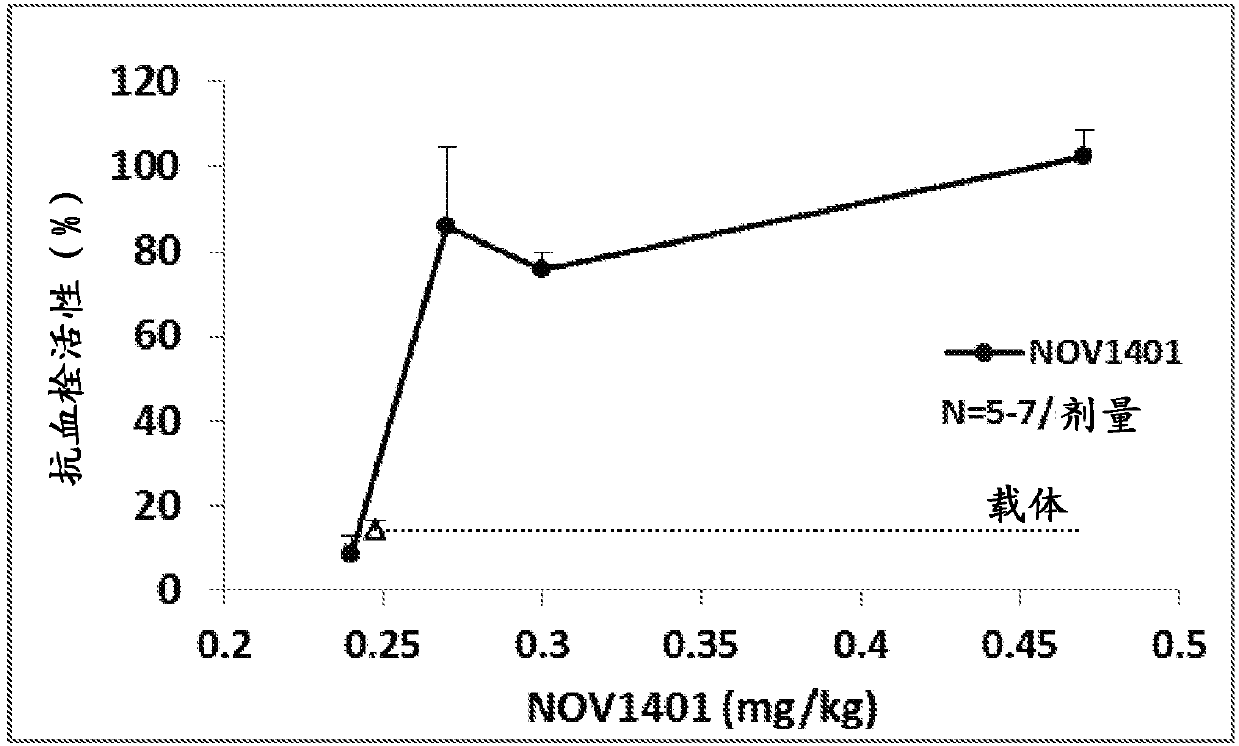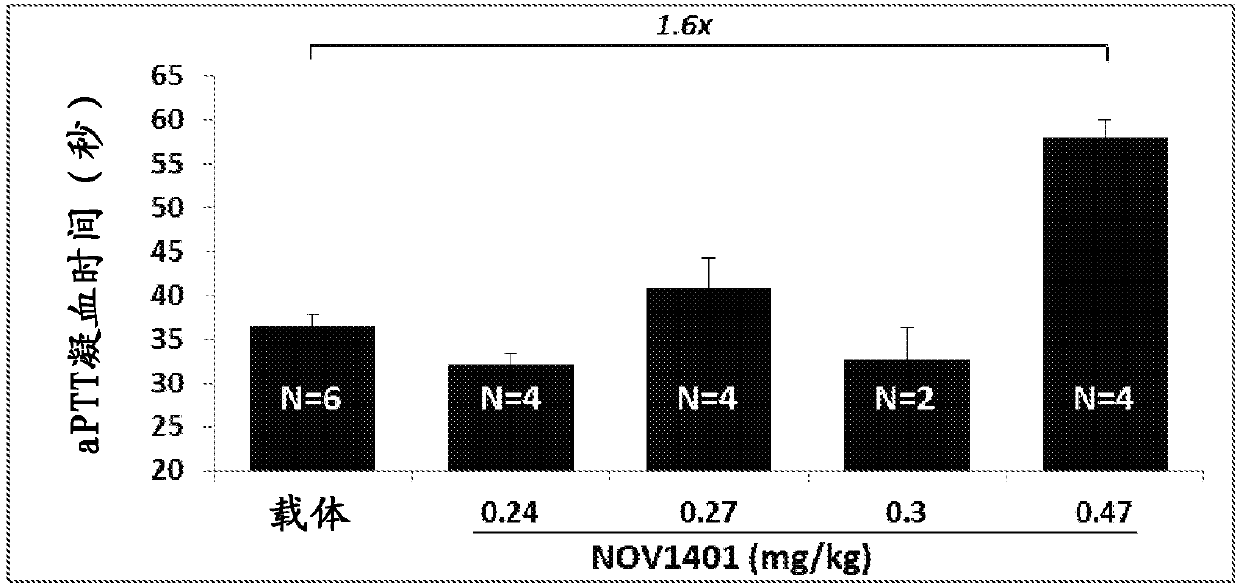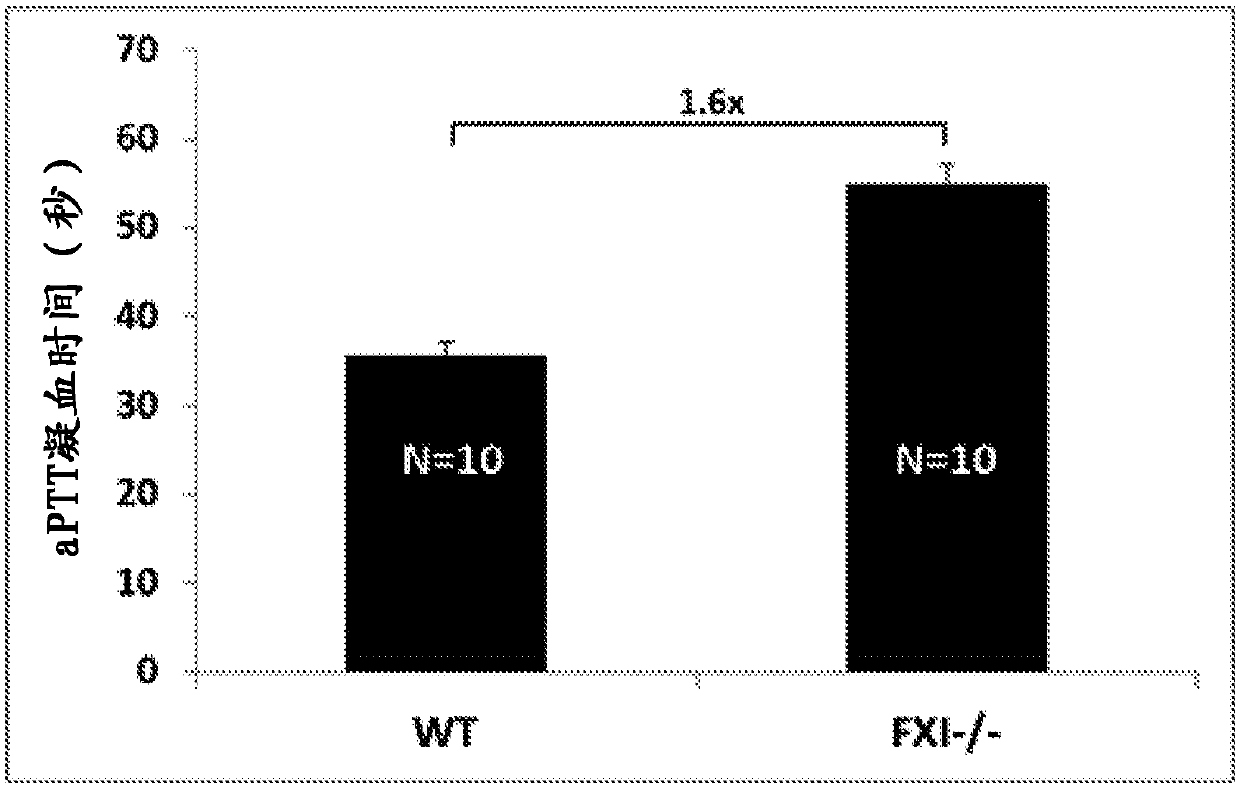Factor XI antibodies and methods of use
A coagulation factor and antibody technology, applied in the direction of anti-coagulation factor immunoglobulin, antibody, antibody medical components, etc., can solve the problem of high bleeding risk of anti-procoagulant
- Summary
- Abstract
- Description
- Claims
- Application Information
AI Technical Summary
Problems solved by technology
Method used
Image
Examples
Embodiment 1
[0463] Human Fab Phage Library Panning
[0464] To select antibodies that recognize human factor XI, multiple panning strategies were employed. Therapeutic antibodies against different variants of the human coagulation factor XI and rabbit coagulation factor XIa catalytic domain proteins were prepared using a commercially available phage display library, Morphosys HuCAL The library was used as a source of antibodies to select clones that bind to coagulation factor XI. Phagemid libraries are based on concept (Knappik et al., 2000, J Mol Biol 296:57-86) and employs CysDisplay displaying Fabs on the surface of phage TM technology (WO01 / 05950). For the isolation of anti-Factor XI antibodies, a liquid phase panning strategy was used.
[0465] Cross-reactivity analysis
[0466] Purified Fabs were tested in ELISA for binding to different variants of human Factor XI (Factor XI, Factor XIa and Factor XIa catalytic domain) and rabbit Factor XIa catalytic domain biotinylated prote...
Embodiment 2
[0470] combine data
[0471] Surface plasmon resonance (SPR) analysis of the catalytic domain of FXI.
[0472] via BIACORE TM T200 Optical Biosensor Based on Surface Plasmon Resonance (BIACORE TM , GE Healthcare, Uppsala) for SPR assay. S series sensor chip (CM5), fixation kit and regeneration buffer were purchased from GE Healthcare (Uppsala). Two different assay settings were performed depending on the ligand format IgG or Fab. First, the surface was activated by N-hydroxysuccinimide (NHS) and N-(3-dimethylaminopropyl)-N-ethylcarbodiimide hydrochloride (EDC). NOV1401-Fab was covalently attached to the activated dextran matrix on the CM5 chip by standard amine coupling methods (GE Healthcare, Uppsala). For NOV1401-IgG, a capture assay was performed and goat anti-human IgG-Fc antibody (JIR) was immobilized on the chip at 14000 RU. The remaining reactive surface groups were inactivated with ethanolamine (EA). Reference cells without immobilized ligand were prepared and ...
Embodiment 3
[0487] Biochemical Assays: Inhibition of FXIa Using Fluorescent Peptides as Substrates in Activity Assays
[0488] The activity of human FXIa (Kordia Life Science NL, Cat. No. HFXIa 1111a) was monitored by a fluorescently labeled peptide with the sequence D-Leu-Pro-Arg*Rh110-D-Pro (Cat. No. BS-2494; Biosyntan GmbH, Berlin, Germany ) cracking is determined. In the substrate sequence written above, * indicates scissile bond, D-Leu: D-leucine, Pro: proline, Arg: arginine, Rh110: rhodamine 110, D-Pro: D -proline). FXIa-mediated cleavage of the scissile bond of the peptide substrate resulted in an increase in the fluorescence intensity of rhodamine 110 when excitation and emission wavelengths of 485 nm and 535 nm were used, respectively. Fluorescence intensity was measured continuously at room temperature (RT) using a microtiter plate reader Safire2 (TECAN, Maennedorf, Switzerland). Assay buffer contains 50mM HEPES (pH 7.4), 125mM NaCl, 5mM CaCl 2 and 0.05% (w / v) CHAPS. In the...
PUM
 Login to View More
Login to View More Abstract
Description
Claims
Application Information
 Login to View More
Login to View More - R&D
- Intellectual Property
- Life Sciences
- Materials
- Tech Scout
- Unparalleled Data Quality
- Higher Quality Content
- 60% Fewer Hallucinations
Browse by: Latest US Patents, China's latest patents, Technical Efficacy Thesaurus, Application Domain, Technology Topic, Popular Technical Reports.
© 2025 PatSnap. All rights reserved.Legal|Privacy policy|Modern Slavery Act Transparency Statement|Sitemap|About US| Contact US: help@patsnap.com



